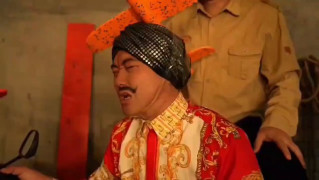C
commander
Guest
Judiciary may not welcome revival of magistracy
http://www.thenews.com.pk/top_story_detail.asp?Id=23274
Wednesday, July 15, 2009
By Ansar Abbasi
ISLAMABAD: The superior judiciary may not welcome return of the district magistracy system if the revived scheme violates the spirit of the constitution in respect to the separation of the judiciary from the executive.
Although it is yet to be seen if the executive magistracy would be revived in its original shape or would be restored with a renewed role, the fact remains that the separation of executive from judiciary has never been as serious an issue as it is today.
Informed sources said that some of the provincial governments are considering taking up the issue with the superior judiciary in order to ensure that the executive magistracy is not involved in such judicial functions that purely fall within the jurisdiction of the judiciary.
According to a source, the Law Ministry has of late ruled that the abolition of the executive magistracy system during the Musharrafs rule had nothing to do with the separation of judiciary from executive. However, the National Reconstruction Bureau (NRB) under a retired general having close association with the ousted dictator, had been arguing that besides being an outdated colonial structure, the abolition of executive magistracy was also required to achieve the goal of complete separation of judiciary from executive.
A pro-executive magistracy source in the government said that the revived magistracy would be entrusted with pre-trial judicial powers in regard to special and local government laws. The source insisted that the types of judicial powers to be given to executive magistrate would be in line with the limits determined by the Supreme Court in its decision given on the matter during mid nineties.
However, it is interesting to note that the issue of separation of judiciary from executive had not even been settled after the apex courts decision and its apparent implementation by the then government of Benazir Bhutto. Many saw the then separation of the judiciary from executive as merely eyewash, as the district magistracy still used to jail people under different offences.
But now in 2009, this country has seen strict implementation of the separation of judiciary from executive like never before. It was the post-March 16 National Judicial Policy making committee under Chief Justice Iftikhar Muhammad Chaudhry that approved National Judicial Policy that clearly envisaged that no judge or judicial official would serve under executive and even would not be involved in the election processes. Although the national judicial policy was formally enforced with effect from June 1, 2009, by May 31st all the judges serving against executive positions had left their executive posts and rejoined their respective courts. There was a lot of pressure from federal and provincial governments on the Chief Justice of Pakistan to allow some judges to continue working against executive posts particularly in the federal Law Ministry and provincial law departments but the CJ did not show any leniency in the strict implementation of the policy.
The Constitution of Pakistan envisages the separation of Executive from the Judiciary in its Article 175 (3) that says, Judiciary shall be separated from executive within fourteen years from the commencing day.
Now that the judiciary has got itself separated completely from the executive, the government has decided to revive the executive magistracy, which traditionally has been entrusted with pure judicial function. Before 1996, the deputy commissioner, an executive bureaucrat, could arrest the accused and give him the capital punishment.
It may be highlighted that originally the Parliament envisaged a period of three years in the 1973 Constitution for the separation of judiciary from executive. The bureaucracy than manipulated and managed to circumvent the constitutional proviso of three years and it was substituted by five years through the Constitutional (5th Amendment) Act 1976 (Act LXII of 1976). Again there were long debates in 1976 and the lawyers community demanded separation of judiciary from executive. Once again the bureaucrats again influenced the than Marshall Law Dictator General Zial ul Haq to amend the constitution and the same provision was amended after 14 years by the Presidents order No XIV of 1985. But even it was not done after the lapse of 14 years.
Finally, it was again the Supreme Court of Pakistan, which in 1990s had to intervene and give decision that executive be bifurcated from judiciary within six months. The executive bureaucracy took the decision as a pain in the neck and implemented it halfheartedly but finally in 2001 the system of executive magistrates was abolished from the Criminal Procedure Code (CrPC).
http://www.thenews.com.pk/top_story_detail.asp?Id=23274
Wednesday, July 15, 2009
By Ansar Abbasi
ISLAMABAD: The superior judiciary may not welcome return of the district magistracy system if the revived scheme violates the spirit of the constitution in respect to the separation of the judiciary from the executive.
Although it is yet to be seen if the executive magistracy would be revived in its original shape or would be restored with a renewed role, the fact remains that the separation of executive from judiciary has never been as serious an issue as it is today.
Informed sources said that some of the provincial governments are considering taking up the issue with the superior judiciary in order to ensure that the executive magistracy is not involved in such judicial functions that purely fall within the jurisdiction of the judiciary.
According to a source, the Law Ministry has of late ruled that the abolition of the executive magistracy system during the Musharrafs rule had nothing to do with the separation of judiciary from executive. However, the National Reconstruction Bureau (NRB) under a retired general having close association with the ousted dictator, had been arguing that besides being an outdated colonial structure, the abolition of executive magistracy was also required to achieve the goal of complete separation of judiciary from executive.
A pro-executive magistracy source in the government said that the revived magistracy would be entrusted with pre-trial judicial powers in regard to special and local government laws. The source insisted that the types of judicial powers to be given to executive magistrate would be in line with the limits determined by the Supreme Court in its decision given on the matter during mid nineties.
However, it is interesting to note that the issue of separation of judiciary from executive had not even been settled after the apex courts decision and its apparent implementation by the then government of Benazir Bhutto. Many saw the then separation of the judiciary from executive as merely eyewash, as the district magistracy still used to jail people under different offences.
But now in 2009, this country has seen strict implementation of the separation of judiciary from executive like never before. It was the post-March 16 National Judicial Policy making committee under Chief Justice Iftikhar Muhammad Chaudhry that approved National Judicial Policy that clearly envisaged that no judge or judicial official would serve under executive and even would not be involved in the election processes. Although the national judicial policy was formally enforced with effect from June 1, 2009, by May 31st all the judges serving against executive positions had left their executive posts and rejoined their respective courts. There was a lot of pressure from federal and provincial governments on the Chief Justice of Pakistan to allow some judges to continue working against executive posts particularly in the federal Law Ministry and provincial law departments but the CJ did not show any leniency in the strict implementation of the policy.
The Constitution of Pakistan envisages the separation of Executive from the Judiciary in its Article 175 (3) that says, Judiciary shall be separated from executive within fourteen years from the commencing day.
Now that the judiciary has got itself separated completely from the executive, the government has decided to revive the executive magistracy, which traditionally has been entrusted with pure judicial function. Before 1996, the deputy commissioner, an executive bureaucrat, could arrest the accused and give him the capital punishment.
It may be highlighted that originally the Parliament envisaged a period of three years in the 1973 Constitution for the separation of judiciary from executive. The bureaucracy than manipulated and managed to circumvent the constitutional proviso of three years and it was substituted by five years through the Constitutional (5th Amendment) Act 1976 (Act LXII of 1976). Again there were long debates in 1976 and the lawyers community demanded separation of judiciary from executive. Once again the bureaucrats again influenced the than Marshall Law Dictator General Zial ul Haq to amend the constitution and the same provision was amended after 14 years by the Presidents order No XIV of 1985. But even it was not done after the lapse of 14 years.
Finally, it was again the Supreme Court of Pakistan, which in 1990s had to intervene and give decision that executive be bifurcated from judiciary within six months. The executive bureaucracy took the decision as a pain in the neck and implemented it halfheartedly but finally in 2001 the system of executive magistrates was abolished from the Criminal Procedure Code (CrPC).































